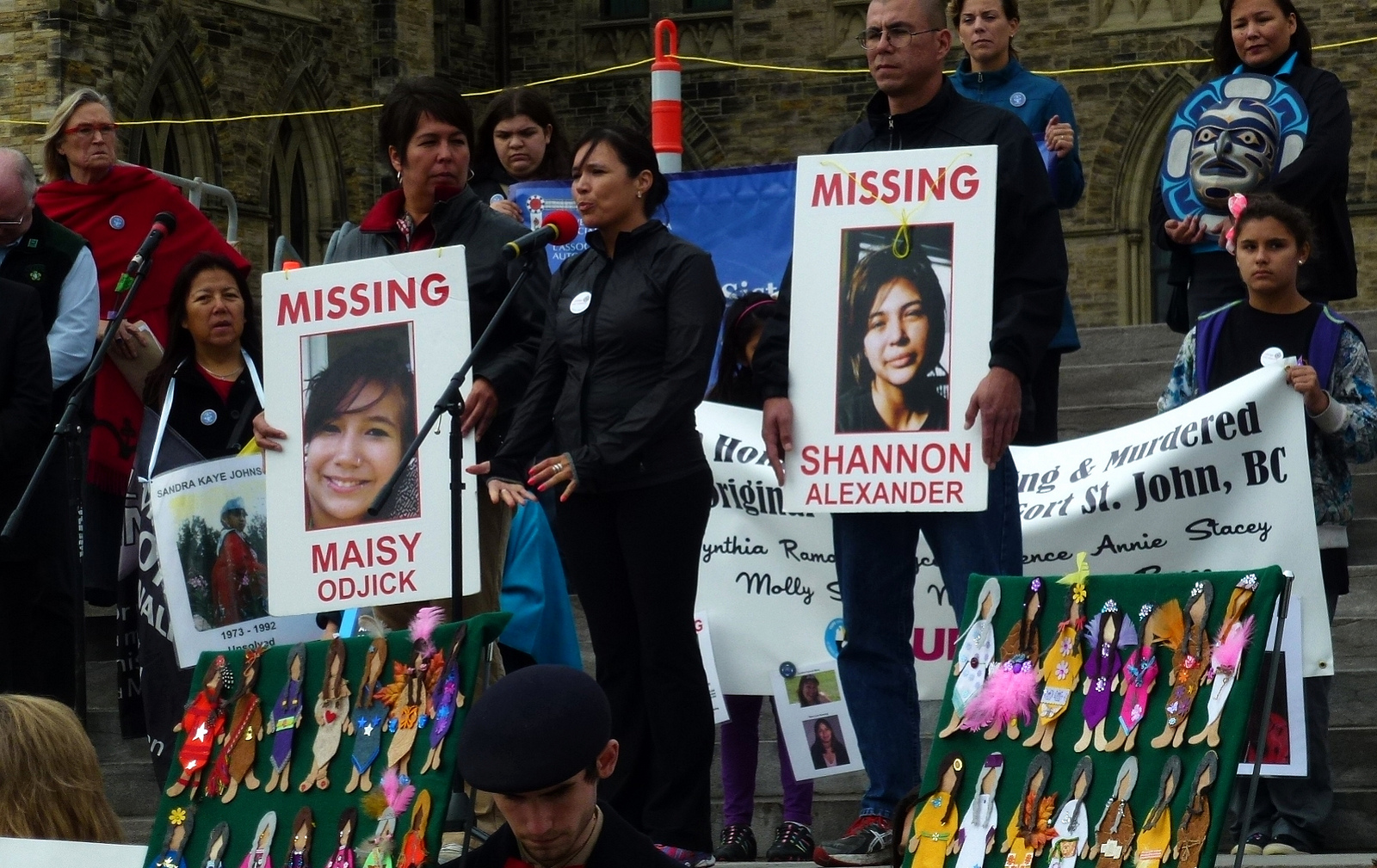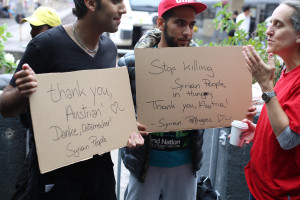The Foreshadowed and the Forgotten
 Protests for the missing aboriginal women. Parliament hill, 2013.
Protests for the missing aboriginal women. Parliament hill, 2013.

Refugees in far-away lands are splashed across daily Canadian life, and yet the homegrown nightmare of missing Canadian aboriginal women has barely been told. The question is, why?
To answer this question, one first needs to compare the hyper-visibility of Middle Eastern migrants in Europe to the invisibility of the missing Aboriginal women in Canada. For documented migrants alone, the United Nations High Commission for Refugees has estimated “Thirty-eight European countries recorded 264,000 asylum applications” from various Middle Eastern countries which is an approximate 5% of the European Union Nation’s population. Meanwhile, in Canada, the Royal Canadian Mounted Police 2014 report stated that 1,200 aboriginal women are declared missing across Canada, which is about 4% of Canada’s population. The numbers are similar, so why are there different public outcomes?
It is difficult to escape the occasionally biased media coverage and opinions of the migrants in Europe, and yet, here in Canada the missing aboriginal women are relatively unheard of, and very few people talk about them.
In Europe, many protests, positive or negative, pro-relief or Islamophobic, have increases the visibility of these migrants, and produced governmental reactions. Hungary has built a wall. Nationalists, such as the English Defence League, are in full-fledged opposition. In September, ministers from the European Union, as the Guardian reports, have “finally decided to agree to the principle of sharing refugees between member states in the first meaningful move towards a common EU policy on asylum seekers.” Other citizens, CNN states, such as those on the German Website “Refugees Welcome” or “Fluechtlinge Wilkommen” have started “to match offers of accommodation in private homes — ideally shared rental apartments — across the country with individual refugees in need of a place to stay” (Smith-Spark).
What about Canada? What about our people’s crisis? What have we been doing? Not all that much. Harper himself stated that many of the women’s cases “had been solved” (Bronskill and Tutton), according to the Daily Mail, presumably to calm the mildly-worried public. Yet, the Royal Canadian Mounted Police reports that although there has been a 9.3% reduction in the number of unsolved Aboriginal female homicides and “suspicious” missing person cases from the 2014 Overview (225 cases to 204 cases) across all police jurisdictions.” (Missing and Murdered)– there are still hundreds of cases not solved, Mr. Harper. Respectively, the RCMP are doing their best to increase awareness of these women. They have been posting information about the women on social media and the hashtag #MMIW (Missing Murdered Indigenous Women). This proves that these women and their family’s struggles are not easily seen in Canadian culture; they need to be put on social media to be visible.
Preceding examples of minorities and how they have been viewed as “the other” in society can help us understand the current public’s response. First Nations women are commonly labelled as weak and criminals in the true north of the strong and free. They are pushed to the peripheries of society, an example being Robert Pickton, who murdered aboriginal women in Vancouver; the media coverage of his crimes were about his acts, not about the First Nations women he targeted.
Where Aboriginals are seen as “other” non-European people in Canada, Europe has its fair share of minorities people too. From Irish Catholics to Roma, many have been discriminated against, much like the First Nations. The difference between Canada and Europe? Europe has always brought the minorities to the attention of the majority. Whether they have been discriminated against or not, they have at least been seen. Minorities groups in Canada such as the Japanese who were sent to work camps in World War Two, have simply been concealed from the public eye.
The European media have been framing these migrants either in an oriental-racist way, as benefit-draining people seeking to overtake European culture, or as desperate refugees. Either way, at least they are discussed in popular media, and so the public has pressured the government to solve the “migrant issue”. However in Canada, open debate and protests are covered less, as the Canadian Broadcasting Company, funded partially from the government, is seemingly afraid to speak out against the government’s lack of action (compared to the United Nations and Amnesty international, who have both opposed Canadian Parliament on its evasion of the missing women topic, according to the Globe and Mail); this ignoring of the missing and murdered indigenous women is probably so as to not have their already minimal funding cut. The “Aboriginal Issue” – a label for multiple crises, has been swept under the rug. With a minimal number of public demonstrations or outcry, the Canadian government is lulled into believing that they do not have to do anything to help these women, their families and all aboriginal women and the stereotypes they face in the Canadian discourse.
The missing and murdered indigenous women of Canada can no longer speak up for themselves. It is time the Canadian public showed solidarity with our First Nations people so that no Aboriginal woman is ever silenced again.
Works Cited
Bronskill, J., & Tutton, M. (2015, October 6). Harper says ‘most’ cases of murdered aboriginal women are solved. In The Globe and Mail. Retrieved October 11, 2015, from http://www.theglobeandmail.com/news/politics/harper-says-most-cases-of-murdered-aboriginal-women-are-solved/article26686290/
Missing and Murdered Aboriginal Women: 2015 Update to the National Operational Overview. (2015, June 19). In Royal Canadian Mounted Police. Retrieved October 11, 2015, from http://www.rcmp-grc.gc.ca/pubs/abo-aut/mmaw-fada-eng.htm#exec
Smith-Spark, L. (2015, September 2). Making refugees welcome: Citizens of Germany, Iceland show the way. In CNN. Retrieved October 11, 2015, from http://www.cnn.com/2015/09/02/europe/europe-migrants-welcome/index.html
Traynor, I. (2015, September 22). EU governments push through divisive deal to share 120,000 refugees. In The Guardian. Retrieved October 11, 2015, from http://www.theguardian.com/world/2015/sep/22/eu-governments-divisive-quotas-deal-share-120000-refugees
Tucker, E. (2015, October 8). RCMP #MMIW campaign aims to bring home Canada’s missing Aboriginal women. In Global News. Retrieved October 11, 2015, from http://globalnews.ca/news/2264152/rcmp-mmiw-campaign-aims-to-bring-home-canadas-missing-aboriginal-women/
